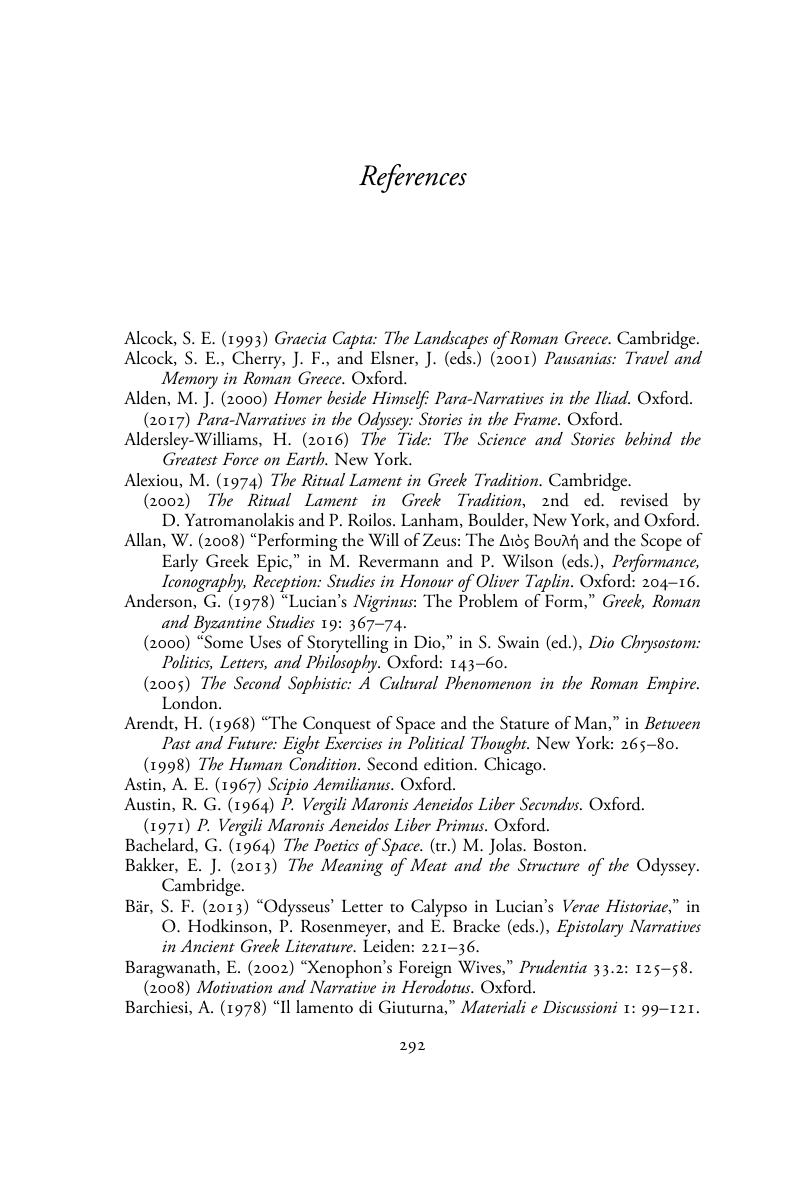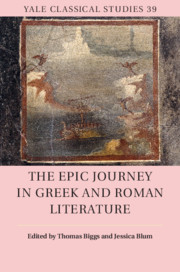Book contents
- The Epic Journey in Greek and Roman Literature
- The Epic Journey in Greek and Roman Literature
- Copyright page
- Contents
- Illustrations
- Contributors
- Acknowledgments
- Abbreviations
- Chapter 1 Introduction
- Part I Odyssean Journeys
- Part II Gendered Maps
- Part III Rome’s Journey: Constructions of Rome through Travel
- Part IV Unearthly Journeys
- References
- Index Locorum
- General Index
- Plate Section (PDF Only)
- References
References
Published online by Cambridge University Press: 31 May 2019
- The Epic Journey in Greek and Roman Literature
- The Epic Journey in Greek and Roman Literature
- Copyright page
- Contents
- Illustrations
- Contributors
- Acknowledgments
- Abbreviations
- Chapter 1 Introduction
- Part I Odyssean Journeys
- Part II Gendered Maps
- Part III Rome’s Journey: Constructions of Rome through Travel
- Part IV Unearthly Journeys
- References
- Index Locorum
- General Index
- Plate Section (PDF Only)
- References
Summary

- Type
- Chapter
- Information
- The Epic Journey in Greek and Roman Literature , pp. 292 - 313Publisher: Cambridge University PressPrint publication year: 2019



